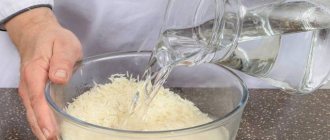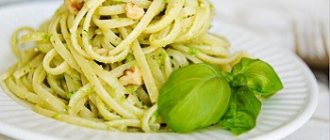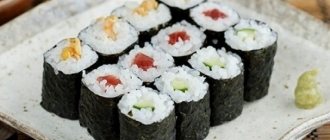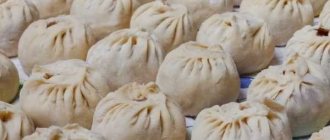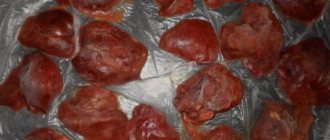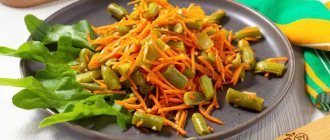So that it flows down your mustache and gets into your mouth
Russian cuisine has a very rich and, if I may say so, intricate history. She constantly assimilated recipes from different peoples, often altered them in her own way, “peeped” on something and took notes.
In 1816, the Tula landowner Levshin decided to compile the first (this was in the 19th century!) cookbook with Russian dishes. Then he complained, the poor fellow, that due to numerous borrowings, the information was “completely destroyed”: “it is now impossible to imagine a complete description of the Russian cookery and should be content only with what can still be collected from what remains in memory, for the history of the Russian cookery has never been devoted to description "
However, thanks to numerous studies of European chefs, who were “dispatched” according to fashion to rich houses, it was possible to piece together the history of the original Russian cuisine and even bring back some old traditions that have survived to this day.
Many dishes of Russian cuisine that our great-grandmothers fed our great-grandfathers for centuries are almost forgotten. Only culinary enthusiasts and historians remember them. And although our ancestors did not eat raw bull testicles or fried cockroaches, many of the ancient recipes can surprise the modern Russian, and sometimes even cause a certain disgust.
Tightly
This was the name for a pie made with oatmeal, buckwheat or rice porridge, covered with thin slices of red fish. This dish was especially loved in the northern provinces of Russia.
Salamata This porridge with a consistency reminiscent of liquid jelly was cooked from buckwheat, oatmeal, rye or wheat flour, pre-brewed in boiling water. It was steamed in the oven, seasoned with salt, butter or lard, garlic and onions. Salamata was a camp food for soldiers and Cossacks, it was prepared by peasants for some holidays, for example, Pochinki - February 3 (16 in a new style).
Yurazhnaya porridge . Yuraga was the whey that remained after churning butter. Buckwheat was rinsed with boiling milk and then seasoned with uraga. The porridge was placed in a cooling oven for several hours, and then seasoned with butter.
Vzvar
Today such a drink can also be found under the name “uzvar”. This drink, according to the history of ancient Russian cuisine, is a kind of jelly made from dried fruits. Traditionally it was served on Christmas Eve. You will need:
- 100 grams of dried pears;
- 100 grams of dried apples;
- 100 grams of prunes;
- two and a half liters of water;
- sugar or honey
Preparation
According to the indicated proportions, you should get four servings of this drink. Here's what you need to do:
- All dried fruits must be carefully sorted so that no various foreign debris remains in them.
- Next, put them all in a deep saucepan and fill with water. Stir until all ingredients are covered with water.
- Now cover the dish with a lid and leave it overnight.
- The next morning, turn on the stove to low heat; Remove the lid, place the pan on top and, stirring occasionally, bring to a boil.
- After this, the broth from ancient Russian cuisine must be continued to cook for another 15 minutes.
- During the remaining time, taste the drink and add sugar or honey (depending on preference).
- Then remove the pan from the stove and leave the contents to cool to room temperature for three hours.
- Once the drink reaches the desired temperature, strain it into a separate container and can be served.
Kvass
In Rus', kvass was the main drink; already in the 15th century there were more than five hundred recipes for its preparation. It was made mainly from bread, but there was also a drink made from vegetables, for example, from beets or turnips
In order to prepare the simplest village kvass from rye bread, you will need:
- 4 liters of water
- 1 cup rye flour
- 1 cup wheat flour
- 1 cup barley malt
- 1 cup rye malt
- 1 tbsp. liquid yeast
- fresh mint leaves
Preparation:
- Mix barley and rye malt, wheat and rye flour.
- Pour boiling water until the flour is moist.
- Let it brew (about 1 hour), then dilute with hot water and leave to cool.
- Then stir in the yeast and some mint leaves, cover with a napkin and wait until foam appears.
- Drain the liquid, add the remaining mint and place it in the refrigerator. In 3-4 days the kvass will be ready!
Tavranchuk
A rather unusual ancient Russian recipe for food that was found on both secular and monastic tables. According to legends, it was prepared from meat, fish, and mushrooms. Products such as pickles, celery and turnips were also added inside. For this recipe you will need:
- kilogram of beef;
- a glass of bread kvass (preferably sour and homemade);
- three heads of onions;
- head of garlic;
- two bay leaves;
- six peas of allspice;
- five sprigs of parsley;
- salt.
Cooking
The essence of this recipe for ancient Russian cuisine is to simmer the main ingredient (meat) for a long time in a small amount of liquid. The cooking instructions themselves look like this:
- The onion must be peeled, washed and cut into feathers.
- Also peel the garlic and divide it into thin slices.
- Rinse the meat, dry with a paper towel and cut into large pieces.
- Heat a frying pan with oil and place the beef in it. Next, the main ingredient is quickly fried.
- Now you need to place a layer of meat in the prepared clay pan, onion and garlic on top. Alternate until all ingredients are gone.
- Bay leaves and pepper are placed on the very top.
- Then the entire contents must be filled with kvass.
- At this stage, you need to preheat the oven to 180 degrees and place the dishes with the workpiece in it. Cook at the indicated temperature for three hours; on the fourth, the temperature can be reduced to 160 degrees. Be careful not to let the contents become too dry.
- Before serving such an interesting dish from the books of ancient Russian cuisine, you need to sprinkle it with chopped parsley. It is also worth adding various pickles, herbs and rye bread to it. It is not necessary to add a side dish, but if you want, any cereal will do.
Pigus
Quite often found under the name “bigus”. This recipe for a dish of ancient Russian cuisine was even somewhat more popular than the world famous cabbage soup. It is worth noting that the exact recipe for this stew has practically not survived to this day. However, there are some processed versions that can be prepared at home. Further in the material we will analyze some of them.
The first will be the standard recipe. To prepare the dish you need to prepare the following:
- kilogram of meat ribs;
- 300 grams of cabbage;
- 300 grams of sauerkraut;
- one carrot;
- onion head;
- one and a half teaspoons of cumin;
- two bay leaves;
- black pepper;
- salt.
Ancient recipes for rye bread
It is known that rye flour has a huge number of beneficial properties. Unlike wheat flour, rye flour does not form gluten; it contains enzymes in a more active state, under the influence of which starch is broken down. Rye flour also contains an amino acid necessary for the body; it contains more iron and magnesium than wheat flour. Ancient recipes mainly describe the process of baking bread from rye flour - many of the excellent qualities of the product were appreciated by our ancestors five hundred years ago.
Cooking Pigus
As noted earlier, all these recipes are not an exact copy of the original. But it is quite possible to get a tasty and aromatic dish if you strictly follow all proportions and steps:
- Rinse the meat and dry with a paper towel;
- Heat a frying pan with oil and place the ribs there. They must be cooked until golden brown.
- After this, a glass of water is added to the frying pan and it is covered with a lid. Next, the contents are left to simmer for an hour.
- At this time, the carrots need to be washed and grated on a medium grater.
- Peel the onion, rinse and cut into rings. They, in turn, need to be divided into quarters.
- Both ingredients are added to the meat. Everything remains to simmer for another 10 ten minutes.
- At this time, according to the recipe for ancient Russian cuisine, you need to chop a fresh head of cabbage (300 grams).
- Next, it needs to be added to the rest of the products. Half of the cumin and bay leaf are also added there.
- The top layer is a layer of sauerkraut. The remaining spices are scattered on top of it.
- Then a glass of water is poured in again, and the contents are covered with a lid and left to simmer for another half an hour. During this time, you should stir the dish periodically.
- Before you unload all the ingredients from the pan and serve this ancient Russian food, it is worth tasting it to determine whether you need to add additional ingredients or not. Depends on preference.
When consumed, the dish should be fresh, hot and preferably served with a side dish. But this is optional.
An old recipe for sourdough bread. How to prepare the main product?
To bake real bread according to an old recipe (the one that our distant ancestors ate five hundred years ago), you need to prepare a starter. This amazing symbiotic product, which is essential for baking bread, contains:
- water;
- whole grain flour (wheat or rye);
- wild yeast culture;
- strains of lactic acid bacteria.
The ratio of bacterial strains and fungal colonies in a high-quality starter should be: 1:1000. As you can see, the nature of the starter is more lactic acid than yeast. But it is precisely thanks to this ratio of microorganisms in the starter that real homemade bread is created, unusually healthy, with a unique smell and taste. The starter itself is prepared exclusively from flour and water. Nothing else is added to the bread recipe according to old Russian recipes: no salt, no sugar, or any other ingredients.
Pigus with potatoes
Another recipe for ancient Russian cuisine (photo presented in the article) that will help you prepare this dish correctly. To implement it, you need to prepare:
- four medium potato tubers;
- 200 grams of sauerkraut;
- two medium-sized onions;
- four pieces of wild garlic;
- one carrot;
- one pea pod;
- a sprig of dill;
- tomato paste (teaspoon);
- Bay leaf;
- oil for frying foods.
Step-by-step preparation
To correctly recreate this recipe for ancient Russian cuisine at home, you just need to follow all the steps. They are presented below:
- Wash the carrots and grate them on a coarse grater.
- Peel the onion and cut into rings. They, in turn, need to be divided into quarters.
- Also wash, peel and cut the potatoes into large pieces.
- Heat a frying pan with oil and place carrots and onions on it. Both ingredients are fried until golden brown.
- At this time, you need to squeeze out the sauerkraut and put it in the frying pan when the first batch of vegetables is ready.
- Now all the ingredients need to be stirred regularly and fried until the cabbage acquires a dark golden hue.
- Next you need to chop the dill and wild garlic.
- After this, potatoes and bay leaves are added to the pan. Everything is filled with water and mixed well.
- Next you need to add a spoonful of tomato paste and mix again. An almost finished dish of ancient Russian cuisine should be covered with a lid and left to simmer for an additional 20 minutes until the potatoes are completely cooked.
- At this stage, prepared greens are added to the pan. Pigus is served hot and should be topped with sour cream or salad.
Cooking a dish with pork
To properly prepare this recipe for ancient Russian cuisine, follow all proportions and steps in the strictly indicated order:
- The meat should be washed, dried with a paper towel and cut into medium-sized pieces. Or whatever way is more convenient for you.
- Next, you need to heat the pan and fry it without using oil. You need to keep it on high heat for three minutes, and then on medium for another 15 minutes until a golden crust appears. Don't worry about the pork burning. The fat it produces is suitable as a substitute for oil.
- Peel the onion and cut into rings, which then need to be divided into halves.
- They are then added to the meat and cooked until tender.
- The carrots need to be washed, peeled, grated and added to the pan with the rest of the ingredients along with the bay leaf and spices. Fry everything for another five minutes.
- After the specified time has passed, add sauerkraut to the remaining products. Mix everything, cover with a lid and leave to simmer for 15 minutes.
- During this time, you need to chop the white cabbage into pieces and after the specified period, add it to the frying pan. Stir all the ingredients again until the ingredients are evenly distributed, cover and cook for another hour, stirring regularly.
- The last stage in the preparation of this dish of ancient Russian cuisine is the processing of prunes. You need to pour boiling water over it and let it soak.
- Once the 60 minutes indicated above have passed, the last ingredient can be added to the pan, mix everything again and let it simmer for an additional 20 minutes. After that, turn it off and you can serve.
Whole lamb stuffed in parts
In Rus' they loved stuffing meat with passion. Many people still cook stuffed geese at home. But our ancestors stuffed everything that started with porridge, eggs, onions, bread, turnips and much more. It was more profitable and tastier to cook this way - the meat juice and fat soaked the filling. And the main type of meat that was consumed in Rus' was, oddly enough, lamb. In any case, such information is provided by ethnographer Mikhail Zabylin in his book “Russian People”. This is what Domostroy recommends to a thrifty and thrifty owner to do with the purchased lamb: “Buy a lamb and skin it at home, and save some sheep skins for a man to buy a fur coat, and lamb offal is an addition to the table, a consolation too. A housewife and a good cook have many plans: she will make a broth from the brisket, stuff the kidneys, fry the shoulder blades, stuff the legs with eggs, chop the liver with onions and, wrapping it in film, fry it in a frying pan. The lungs, also with milk, flour and eggs, will be scattered, and the intestines will be filled with eggs, the brain of a lamb with giblets will be prepared in a decoction, and the tripe will be stuffed with porridge, and the kidneys will be boiled or, having been stuffed, fried - and if this is done, One ram will bring a lot of joy. (It’s good to keep any jelly on ice).”
Steamed turnips
It was one of the main products in ancient Russian cuisine, periodically replacing meat, fish and even cereals. However, at the moment there are too few ideas regarding how this vegetable can be used in cooking. Nevertheless, some methods of its preparation are quite relevant. To implement one of them you will need:
- two turnips (if you are using an extremely small vegetable, it is better to use four or five);
- a tablespoon of water;
- onion head;
- two tablespoons of sunflower oil;
- a bunch of fresh herbs;
- salt.
Cooking turnips
In home cooking, turnips are often used as a potato substitute in soups. In this case, you need to perform the following steps:
- Rinse the vegetable thoroughly, peel and cut either into strips or into circles. If you use several small pieces, you don't even have to cut them.
- Pour the specified amount of water into the bottom of the pot in which the dish will be baked.
- Next, put the chopped turnips in a prepared bowl, add spices and salt (if you think it necessary, the recipe does not require this).
- The oven needs to be heated to 165 degrees.
- After this, the pot must be placed on a baking sheet and baked for an hour.
- As soon as the dish is ready, it needs to be transferred to a salad bowl. But the recipe for ancient Russian cuisine does not end there.
- Next, you should peel the onion, rinse and cut into halves of rings.
- Wash the greens and finely chop them.
- Add both ingredients to the turnips, pour sunflower oil on top, add salt and mix thoroughly. The dish can be served as a main dish or as a side dish with fish. Actually, it is precisely because of the excellent combination with fish that turnips are often replaced with potatoes.
Apple meringue
Photo: Monkey Business Images / photobank “Lori”
Bake 5 large apples, rub through a sieve, add 1½ cups, that is, ¾ pound, of fine sugar, stir for at least two hours, in a saucepan, covering it with ice or snow, until the mass turns white and thickens so that a spoon can stand stay in this mass; then place the cake with a spoon on the paper or fill with this mass small paper boxes 2 inches long [1 inch - 4.4 centimeters] in length, almost ⅝ inch in width and height, insert into the oven, in a light heat, so that they dry completely; then remove the papers, place the cake on a dish and again in a warm oven, where it should remain until the day it is served. There will be 35 pieces.
Author: Diana Teslenko
Jur
A rather unusual recipe that was forgotten due to the specific taste and smell that comes from it. The problem lies in the oat flour used for cooking. The bottom line is that after processing it acquires an aroma similar to yeast. However, the dish is also known as longevity soup, and therefore it is still worth paying attention to it. To prepare you need to prepare:
- 800 grams of oatmeal;
- two glasses of water.
What did the rich eat[edit]
In general, much of what has already been listed above, except that they could afford to eat meat dishes much more often. Moreover, their position forced them to eat expensively and show their wealth in dishes, as was the case in Europe. Among the people, it was generally not customary to skip even one meal, and among the wealthy people, in addition to the daily routine, dishes were served on the table in a certain order: first cold, then hot or stew, then fried or boiled, finally dessert (once in the word used was “postolnik”).
Rich people could afford to buy products brought from afar at the market. Lollipops, cookies, gingerbread, sugar loaves, overseas figs began to appear for sale relatively late and were bought up for the courts of the rich. Spices (from pepper to cloves) have been known for a long time: they came along trade routes from Bulgaria and Byzantium. Whitefish, trout, other northern fish, sturgeon caviar and white fish were also purchased only for the yards of the rich. Often, reservoirs were included in their lands along with forests, and fishermen (that is, professional fishermen, an ordinary fisherman - just a catcher) caught all kinds of fish for their owner, there could be dozens of varieties on the rich man’s table. The clergy ate a lot of fish: monks were generally forbidden to eat meat, and the white clergy traditionally fasted more strictly than the laity, and they had more fasting days, so they ate an incredible amount of fish.
The boyars actively consumed, as a sign of status, deer meat, bear meat - in general, large game. However, until the XVI-XVII centuries. in Russia they did not know foreign wines, and therefore they got drunk at rich feasts with the same thing that, in general, a simple man could get drunk with. The richer the owner was, the more they ate and the more terribly they overeat, and not eating or drinking when visiting a rich man was considered an insult to the house.
Jura preparation process
Interestingly, the dish itself turns out to be quite sweet and generally resembles the taste and appearance of jelly. It used to be served with ingredients such as honey, viburnum, various berries, butter or dried fruits. The dessert is prepared as follows:
- The water needs to be heated, but not boiled.
- After this, you need to start gradually pouring it into the prepared oatmeal. In this case, it is necessary to thoroughly mix both ingredients so that lumps do not form and the mass is of a homogeneous consistency.
- The resulting mass must be covered and put in a warm place for three hours to form a dough.
- After the specified time has passed, the contents must be strained through cheesecloth into another baking container.
- At this stage, the oven is heated to 170 degrees. The workpiece is placed in it.
- It should be cooked until it looks like thick jelly. At the same time, do not forget to stir the contents periodically.
The finished dessert can be served with milk. It is also worth noting that jur (without various additives) is beneficial for the gastrointestinal tract. In this regard, it can be periodically consumed by people who adhere to special diets.
Sweet pie
Photo: glavpirog.rf
Lenten dough:
For 6 people, take 1¼ cups of warm water, 2 spools [1 spool - 4.26 grams] of dry yeast. Which should first be diluted with a little warm water and 2 cups of coarse flour, dissolved early in the morning. When it rises, add a teaspoon of salt, beat it thoroughly with a spatula, add two tablespoons of poppy, sunflower or Provençal [olive] oil, ground with ½ cup of sugar, add 10 grains of cardamom, or lemon zest, or 2-3 drops of rose or lemon oil, or vanilla drops, or cinnamon, add flour, knead. When it rises, make a round pie with a welt, cover with apples, etc., remove strips of dough from above, let rise, brush with honey and water, place in the oven; flour only 1½-2 lbs.
Cherry jellied meat
In ancient Russian cuisine, this peculiar pudding was prepared with the addition of wine and was popular for a very long time. However, the exact recipes were lost and the popularity of the dish gradually faded away. But at the moment there are still options that are close to the original recipe. Let's try to do one of them, you should prepare:
- three glasses of cherries;
- one and a half glasses of granulated sugar;
- half a glass of white wine;
- cinnamon (depending on preference, but optional);
- cloves (same as with cinnamon).
Vekoshnik
The pie, popular in Russia, was usually prepared after the holidays from fish and meat leftovers - in a word, everything that was a pity to throw away, but could still be eaten. The leftovers were called “vekoshy”, hence the name of the dish.
The preparation of vekoshnik was very simple. They rolled out the dough and stuffed it with chopped pieces of yesterday's food. Why not old Russian pizza?
Preparing jellied meat
Despite the recipe being quite simple and close to the original, it is worth keeping in mind that this is just one guess about what this dish could have been like in its original form.
- Pit two out of three glasses of cherries.
- Pour the prepared berries along with sugar and leave to steep for two hours. If you do decide, you can add a small amount of cinnamon and cloves to these two ingredients.
- Next, you need to rub the resulting mixture through a sieve and mix with one glass of sugar. Pour half a glass of white wine into the same mixture.
- Pour the resulting mixture with a small amount of boiling water and mix thoroughly.
- After this procedure, she needs to let it brew.
- Next, pit the remaining cherries.
- The cooled mixture can be carefully transferred to a deep dish.
- Prepared berries are also placed there.
- Everything is left to cool again.
- The finished jellied meat is served along with biscuits.
Lampopo
It is both a sweet dish and a drink. Lampopo became very popular in Russia in the 19th century. In the 1850s and 1860s, it was poured in all taverns and restaurants in Moscow and St. Petersburg. The best Lapopo was served in Moscow, in the Trinity Tavern. Although this was quite recently, the recipe for lampopo sounds very strange, and makes us understand how rapidly taste preferences change : Sourdough bread with raisins is turned into stale crackers, then they are filled with light beer, to which rum, a lot of sugar and lemon juice are added. In this form, this dish is served on the table. The liquid was drunk and the crackers were eaten.
Results
These are just some of those ancient recipes for ancient Russian cuisine at home that were lost and completely or partially restored. For example, the following dishes were not included in the material:
- Soup made from greens, vegetables, fish and crushed ice. In the old days, this independent dish was called botvinya.
- Fish kalia. It vaguely resembles a roast, only using different types of fish.
- Lenten turnip soup. It was also quite often found on the tables of Ancient Rus'.
- Fried swan.
Many of the recipes were completely lost, and one can only learn about their existence from various literary works or dictionaries.
Nakrepok
The birthplace of the Western Russian pie is the Tver and Pskov regions. Its name comes from the word “nakrepa”, which means “glutton”. In ancient times, this treat was considered a symbol of prosperity and happiness . No wonder, with such and such a composition!
Nakrepnik was baked on major holidays with prayers and good thoughts. The butter dough was filled with crumbly buckwheat, rice or oatmeal porridge, boiled eggs, and fried vegetables. Wealthy people could afford to top it with pieces of lightly salted red fish. By the way, the word “krepa” also means the filling - porridge tightly held between layers of fish.


